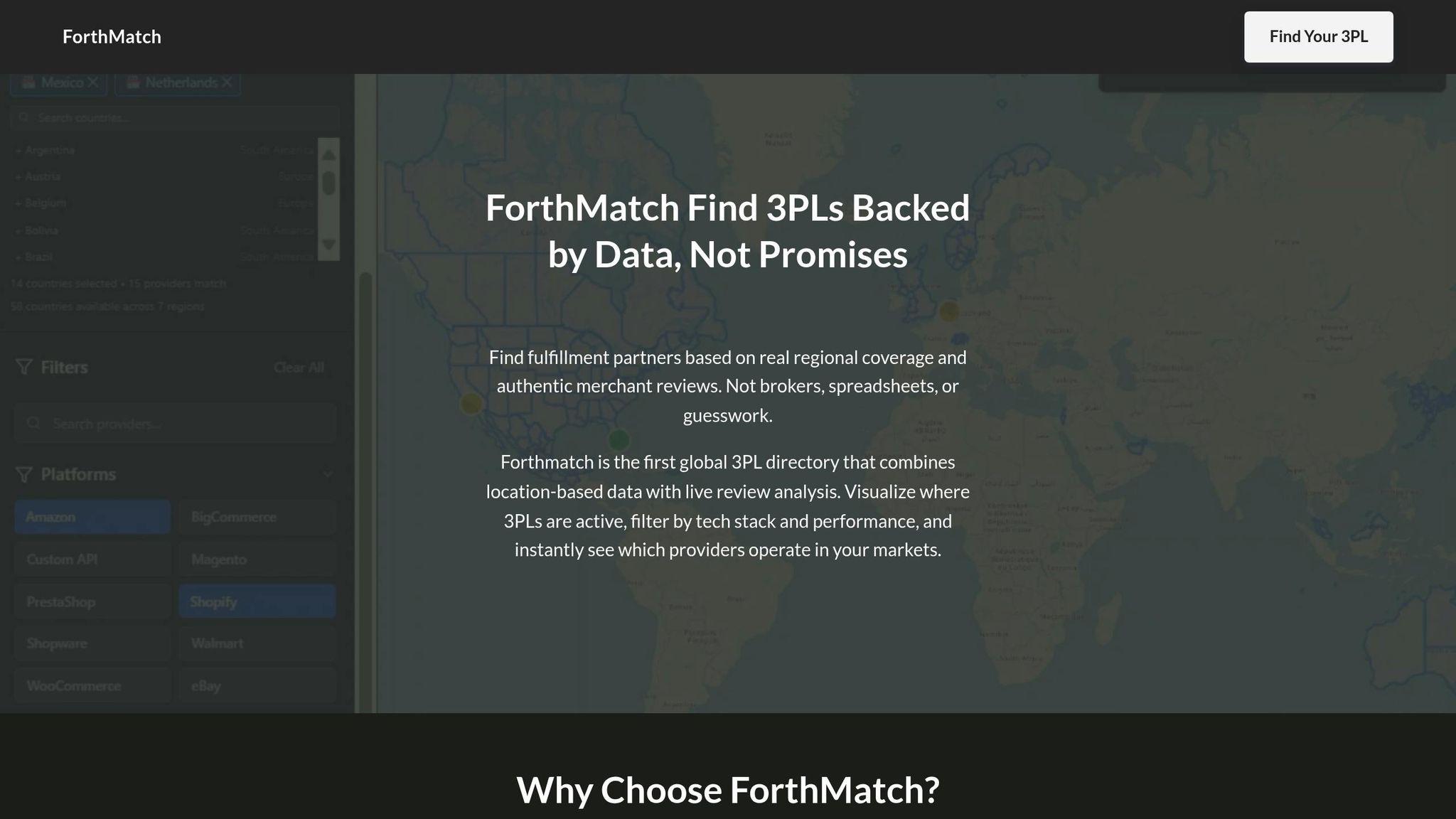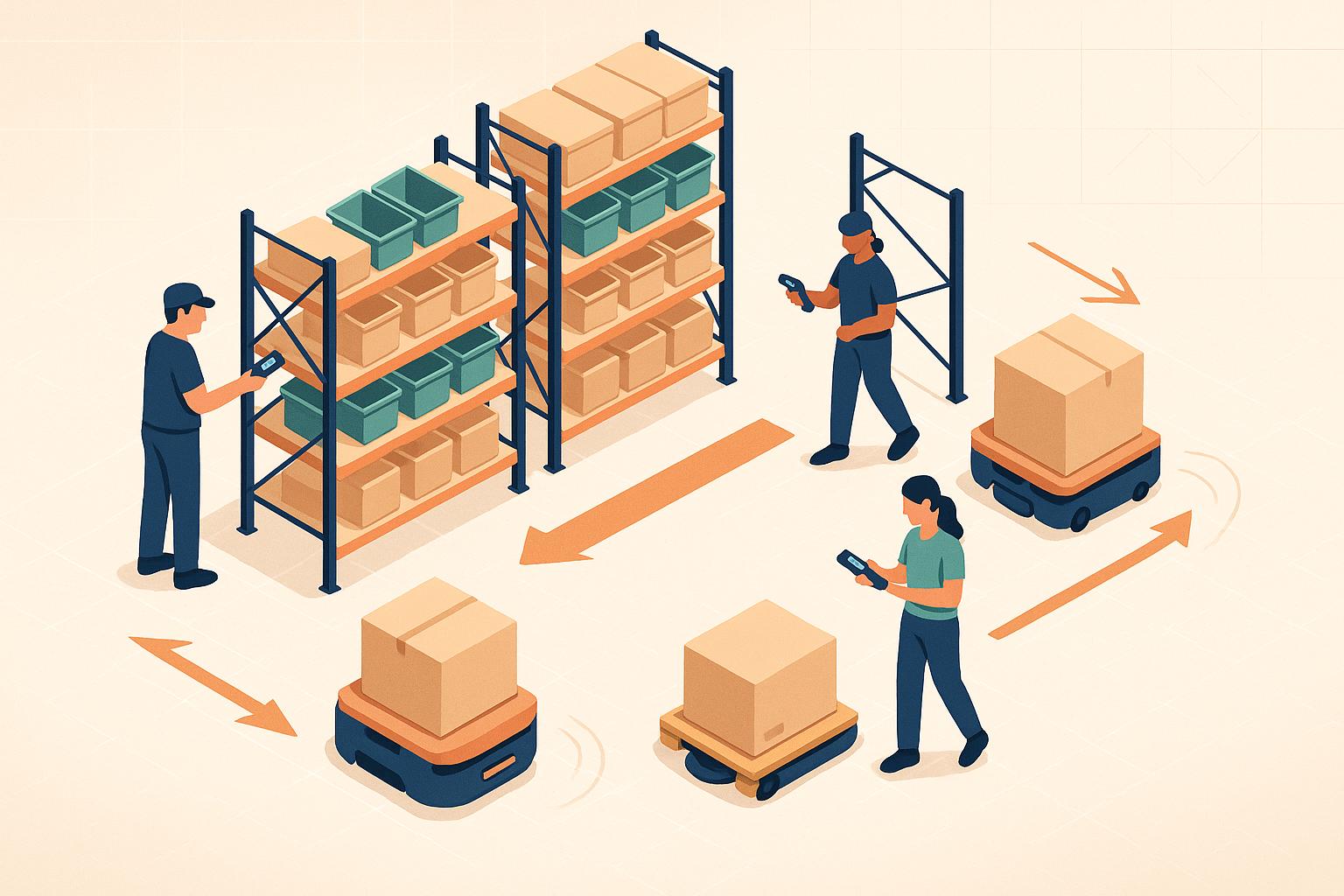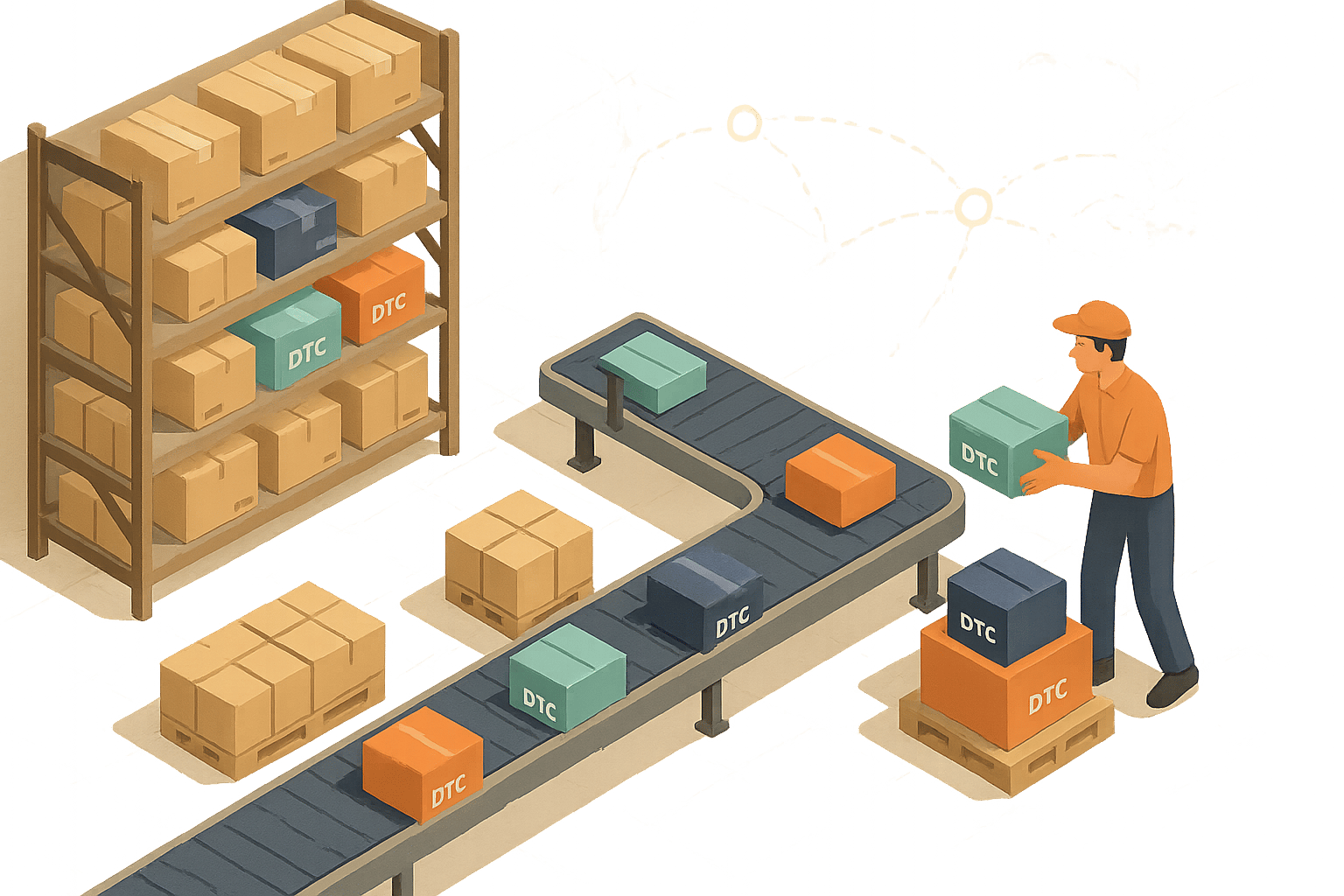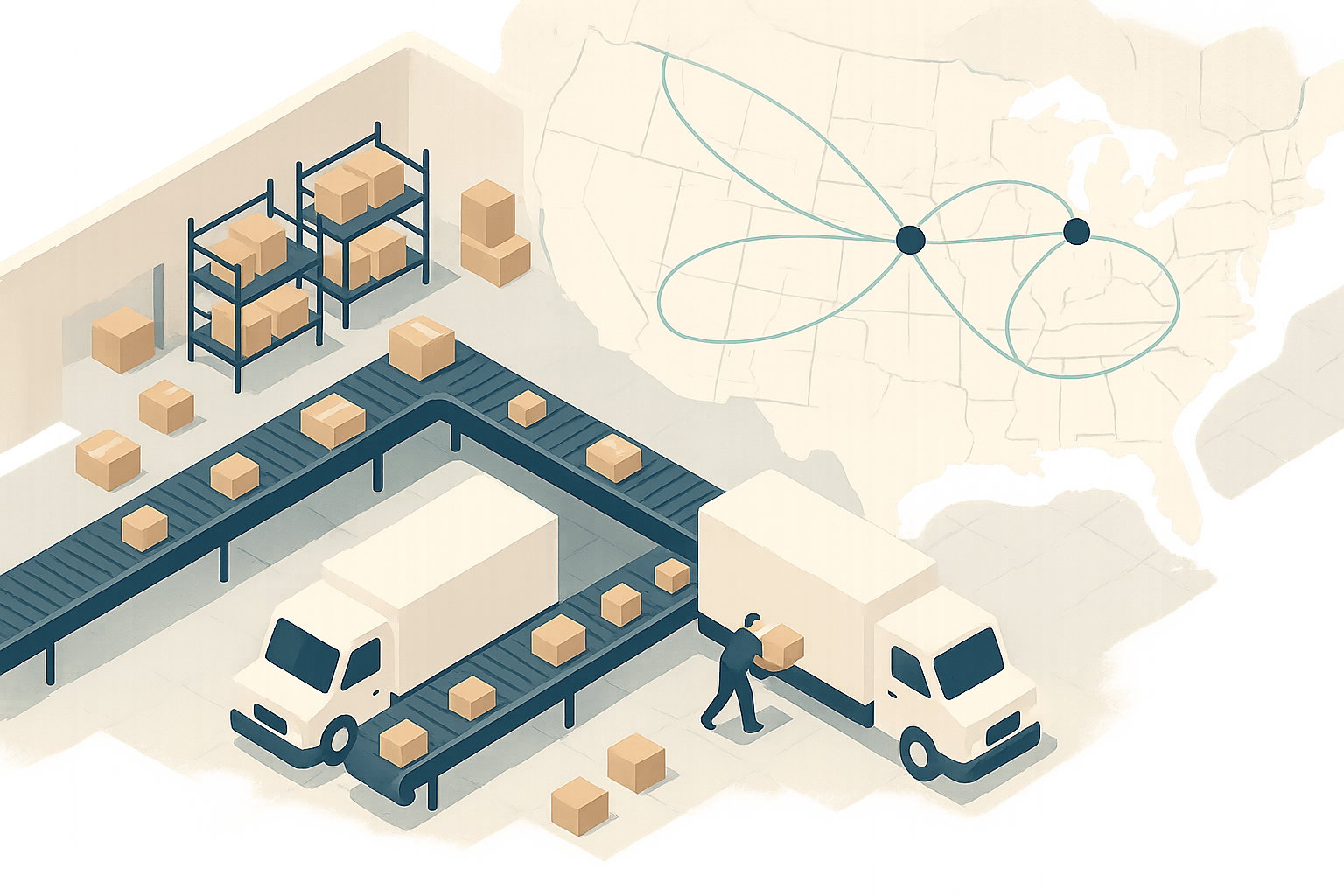Want to keep customers loyal? Communicate better during order fulfillment.
Here’s why this matters:
- 61% of customers leave a brand after one bad experience.
- 58% stop buying after two or more late deliveries.
- Poor communication during fulfillment damages trust and drives customers away.
For direct-to-consumer (DTC) brands, the stakes are higher. Customers hold your brand accountable for delays or issues - not your 3PL partner. This article explains:
- Common communication issues with 3PLs (like mixed messages and late updates).
- Best practices for clear, proactive communication.
- How technology (like live tracking and integrations) improves transparency.
- What to look for in a 3PL partner to ensure smooth communication.
If you’re using a 3PL, improving communication isn’t optional - it’s how you build trust, reduce support costs, and keep customers coming back.
The Road to 3PL Excellence: Key Practices Every Provider Should Know
Common Communication Problems in 3PL Fulfillment
Even with good intentions, many 3PL partnerships struggle to keep customers informed. These communication gaps can erode trust and damage the customer experience. Recognizing common issues can help you identify warning signs early and choose a 3PL that communicates effectively. Here are three major communication challenges that often impact fulfillment.
Late or Wrong Order Updates
One of the most frequent problems is this: Customers feel frustrated and anxious when they're unsure if their order is delayed, lost, or even shipped at all. Timely and accurate updates are critical for maintaining trust and ensuring smooth order tracking.
The statistics back this up: 62% of customers want real-time updates on their orders, and 83% say poor communication would discourage them from shopping with a brand again. A 2024 Mintsoft survey found that 47% of DTC brands saw increased customer support tickets due to delayed or incorrect shipping notifications from their 3PLs. When communication falters, customers turn to support teams for answers, leading to higher operational costs and strained resources.
These delays often stem from outdated systems, poor integration, manual errors, or inadequate staff training. Imagine a scenario where a customer gets a shipping confirmation email, but the tracking link shows no movement. The customer doesn’t blame the 3PL - they blame your brand. Trust erodes quickly when expectations aren’t managed.
Missing Early Warning Systems
Another major issue: Timing is everything when fulfillment problems arise. The difference between a minor inconvenience and a major headache often hinges on how quickly issues are flagged. Unfortunately, many 3PLs lack proper early warning systems to catch problems before they escalate.
Early warning systems should detect potential delays, inventory shortages, damaged goods, or shipping disruptions early. These alerts let brands manage expectations and address problems before customers are affected. Without them, you're stuck reacting to issues instead of preventing them. Over 60% of eCommerce customers cite poor communication about order status as a top source of dissatisfaction. For example, if a 3PL doesn’t notify you about a weather-related delay, you lose the chance to update customers with revised delivery timelines.
This lack of foresight creates a reactive environment, where support tickets can jump by as much as 30%. The result? Higher costs and dwindling customer loyalty.
Mixed Messages
A third common problem: Conflicting updates from your brand and your 3PL confuse customers and weaken trust. Mixed messages happen when customers receive inconsistent information - like a delivery confirmation from your store while the 3PL’s tracking system shows the package is still in transit.
For instance, your eCommerce platform might send a “shipped” notification the moment a label is created, but the 3PL’s system won’t update until the carrier scans the package. To customers, this discrepancy signals that your brand isn’t in control of their order.
These inconsistencies often arise from unclear communication protocols and poorly defined roles between brands and 3PLs. Vague contracts and lack of standardized processes lead to information gaps that can make your brand look unprofessional. Customers expect a seamless experience, and when they get mixed messages, they start questioning your ability to manage their orders effectively.
Best Practices for Clear and Effective Customer Communication
Late updates, unclear warnings, and inconsistent messages can frustrate customers and damage trust. To address these issues, businesses need structured strategies and well-defined communication protocols. The strongest 3PL partnerships thrive on consistent messaging, proactive updates, and clear processes. Here's how to create a framework that keeps customers informed and happy.
Setting Up Clear Communication Channels
Effective communication starts with selecting the right channels for specific updates. Each method has its strengths, and knowing when to use each one can significantly improve the customer experience.
- Email: Ideal for detailed, actionable updates such as tracking numbers and delivery instructions. These emails should be mobile-friendly, concise, and packed with useful information.
- SMS: Perfect for urgent, time-sensitive alerts like shipping notifications and delivery confirmations. Customers appreciate quick, straightforward text updates for critical moments.
- Push Notifications: For brands with mobile apps, these are excellent for real-time updates on order status, shipping, deliveries, and returns. They appear directly on customers' screens, making them hard to miss.
- Live Chat: A must-have for modern customer service, but only effective if your support team has full access to fulfillment data. A well-integrated chat system allows customers to get instant answers without repeating themselves.
- Social Media: Platforms like Twitter and Facebook serve as both reactive and proactive tools. Monitor these channels for customer queries, and use them to share updates about shipping delays or service interruptions.
Fast responses are critical. In fact, 90% of consumers expect an immediate reply to customer service inquiries, with 60% defining "immediate" as within 10 minutes.
Creating Standard Communication Rules
Inconsistent messaging can quickly erode trust. Standardized operating procedures (SOPs) help ensure accuracy, speed, and consistency in customer communication. Without clear rules, conflicting information can confuse customers and harm your reputation.
- Document Responsibilities: Create a contact matrix for both your team and your 3PL partner. This ensures customers receive consistent answers, no matter whom they speak with.
- Define Communication Methods: Clearly outline which channels to use in different scenarios. For instance, routine updates might go through automated emails, while urgent issues require phone calls. Establishing response time expectations ensures teams stay aligned.
- Quality Checks: Verify all information - such as stock levels, packaging updates, and order confirmations - before it reaches customers. This reduces errors and avoids mixed messages.
- Shared Digital Workspace: Use a centralized portal where your team and 3PL partner can access real-time data, track issues, and document decisions. This minimizes confusion and keeps everyone on the same page.
- Performance Reviews: Regularly evaluate communication metrics like response times, message accuracy, and customer satisfaction. These reviews help identify areas for improvement.
With standardized rules in place, the next step is to ensure proactive updates keep customers informed.
Early Notifications and Live Updates
Proactive communication can turn potential problems into manageable situations. Early warning systems should flag delays, inventory shortages, damaged goods, or shipping disruptions before they escalate. Notify customers immediately when issues arise.
- Escalation Procedures: Define clear criteria for escalating urgent situations. Use dedicated channels for different severity levels and set realistic resolution times.
- Live Tracking: Give customers real-time visibility into their orders. This not only reduces support inquiries but also boosts satisfaction.
- Set Realistic Expectations: Provide updated timelines and solutions as soon as delays occur. Whenever possible, aim to exceed customer expectations.
Finally, monitor key performance indicators like response times, message accuracy, and satisfaction scores. Use fulfillment analytics to refine your notification strategies based on customer feedback and behavior. By focusing on proactive and transparent communication, you can build stronger, more trusting relationships with your customers.
How Technology Improves Communication
Modern technology has reshaped how 3PL providers and DTC brands communicate, offering real-time updates and reducing the need for manual processes. Advanced systems eliminate guesswork, speed up response times, and provide instant access to critical data. Instead of relying on phone calls or manual updates, integrated platforms now handle these tasks seamlessly.
The rapid growth in the 3PL and DTC sectors is closely tied to these technological advancements. By making communication faster and more reliable, technology has become a key driver of this progress. Let’s dive into how live tracking, platform integration, and technology comparisons improve communication and customer satisfaction.
Live Tracking and Self-Service Dashboards
Warehouse Management Systems (WMS) and customer-facing dashboards have revolutionized how orders are tracked and managed. These tools provide continuous, real-time updates, allowing customers to check order statuses, inventory levels, and shipping progress without needing to contact support teams. Real-time tracking relies on GPS, automated scanning, and carrier integration to deliver precise updates and quickly identify potential issues, reducing delays and minimizing human error.
Self-service dashboards are another game-changer. They let customers find real-time order locations and estimated delivery times (ETAs) on their own, significantly cutting down on support inquiries. AI models further enhance this process by analyzing historical data, traffic conditions, and carrier performance to provide accurate ETAs. Features like GPS-enabled driver apps, countdowns to delivery, and photo confirmations of completed deliveries make the entire fulfillment process more transparent.
Integration with eCommerce Platforms
Integrating eCommerce platforms with 3PL systems creates a seamless flow of data between online stores, fulfillment centers, and customers. Platforms like Shopify and WooCommerce, when connected to fulfillment centers, reduce manual errors and improve efficiency. For growing DTC brands, API-first or Shopify-native integrations that handle high volumes are particularly valuable. These integrations enable automated order processing, real-time tracking, accurate inventory management, and timely shipping updates.
With real-time inventory visibility across multiple warehouses, businesses can avoid overselling and better manage demand. Customer service also benefits from integrated call centers, which centralize communication and provide professional support.
"ShipBob's API lets us build custom logic since we ship personalized products with lots of variations in the kits we send. We can write a few lines of code instead of creating a manual kit for each possible order combination as we'd have to do in a tool like Shopify."
- Oded Harth, CEO & Co-Founder of MDacne
Comparing Communication Technology Options
Different technologies offer varying levels of automation and precision. Here’s a quick comparison:
| Feature | Traditional Tracking | Real-Time Tracking |
|---|---|---|
| Update Frequency | Delayed or periodic updates | Continuous, live updates |
| Data Access | Manual checks, limited data | Instant dashboard access |
| Inventory Accuracy | Prone to lags or errors | Highly accurate through automation |
| Customer Experience | Generic status like "In Transit" | Detailed, real-time location and ETA |
| Issue Resolution | Reactive (after problems arise) | Proactive (issues flagged early) |
File-based integrations, while simple, require manual effort and are error-prone. Portal-based systems, though more advanced, still involve significant manual work and are less scalable.
For DTC brands, choosing a 3PL partner with robust real-time visibility tools is essential. Features like branded portals or dashboards that provide up-to-date tracking, inventory levels, and carrier performance metrics can significantly enhance customer satisfaction. Proactive alerts that flag issues before they escalate also help reduce customer frustration.
The right technology should align with your growth goals. Tools offering customizable reports and real-time customer insights in an easy-to-use interface can greatly improve customer service. With 41% of senior supply chain leaders identifying customer experience as the top driver for focusing on DTC sales, advanced communication technology isn’t just a convenience - it’s a competitive edge. By selecting 3PL partners that leverage these tools, brands can streamline operations and ensure they’re staying ahead in a fast-paced market.
sbb-itb-eb0f906
Choosing the Right 3PL Partner for Better Communication
Selecting the right third-party logistics (3PL) partner goes beyond just comparing warehouses and shipping rates - it’s about finding a provider that keeps both you and your customers informed at every stage. Considering that 86% of Americans view transparency as a key factor in their purchasing decisions, poor communication can lead to dissatisfied customers, strained relationships, and lost revenue. On the other hand, a 3PL partner with strong communication practices can give you a competitive edge, helping to build trust and drive growth.
Here’s what to look for in a 3PL partner to ensure seamless communication, and how Forthmatch simplifies the process of finding the right fit.
Key Criteria for Evaluating 3PL Communication Skills
When assessing potential 3PL partners, focus on their ability to maintain clear and consistent communication. Here are the critical areas to evaluate:
- Real-Time Visibility and Tracking Tools: Providers should offer detailed dashboards that let you monitor live inventory levels, order statuses, and shipment locations. Look for systems that provide up-to-the-minute updates to keep you fully informed.
- Multiple Communication Channels: A good 3PL should be easy to reach through various channels like phone, live chat, email, and a client portal. Having a single point of contact can also simplify issue resolution and prevent the frustration of being shuffled between departments.
- Platform Integration Capabilities: Ensure the 3PL can seamlessly integrate with your eCommerce platform, whether it’s Shopify, WooCommerce, or Amazon. Ask about their experience with your platform, their API capabilities, and how long the integration process typically takes.
- Proactive Problem-Solving: The best 3PLs use early warning systems to flag potential issues and propose solutions before they escalate. They should also provide metrics on order accuracy, processing times, and carrier performance, along with customizable reports for better transparency.
- Technology Adoption: Modern technology is key to effective communication. Since 94% of 3PLs report that adopting new technologies is essential for growth, prioritize providers that invest in advanced systems to enhance communication.
"Transparent and open communication is essential for any business partnership, and this is especially true for 3PL (third-party logistics) providers." - Kyle Kobriger, Badger Fulfillment Group
- Reference Checks and Site Visits: Speaking with current and past clients can reveal how well a 3PL handles communication. If possible, visit their facilities to see their technology and processes in action. Ask specific questions about response times, issue resolution, and overall communication quality.
How Forthmatch Simplifies the 3PL Selection Process

Finding a 3PL partner that meets all these criteria can feel overwhelming, but Forthmatch makes it easier. This platform offers a free, comprehensive directory of vetted 3PL providers tailored for direct-to-consumer (DTC) brands.
Here’s how Forthmatch helps streamline the decision-making process:
- Direct Access to Providers: Skip brokers and hidden markups. Forthmatch connects you directly with 3PL providers, offering transparent details about their services, pricing, and performance.
- Real-Time Service Area Maps: These maps show exactly where each 3PL can deliver, using precise data to match providers with your customer base. This clarity helps avoid the communication breakdowns that happen when 3PLs overpromise on delivery zones.
- Feature-Based Filters: The platform lets you filter providers by communication-focused features like platform compatibility, integration support, and real-time tracking tools. This makes it easy to find a 3PL that aligns with your operational needs.
- Community-Sourced Reviews: Peer feedback from other DTC merchants offers valuable insights into a provider’s responsiveness, problem-solving skills, and overall communication quality - details that marketing materials often gloss over.
- Data-Driven Trust Scoring: Forthmatch evaluates 3PLs based on reputation, credibility, and performance, giving you an objective measure of their reliability before you reach out.
- Zero-Markup Approach: Unlike platforms influenced by referral fees or broker relationships, Forthmatch provides unbiased rankings based solely on a 3PL’s actual capabilities. This ensures you’re making decisions based on communication quality, not advertising budgets.
Conclusion: Improving Customer Communication Through 3PL Partnerships
In today’s fast-paced fulfillment world, clear and effective customer communication isn’t just a nice-to-have - it’s a must. It’s what shapes how customers see your brand, influences their loyalty, and directly impacts your revenue. Partnering with the right third-party logistics (3PL) provider can turn a confusing and frustrating experience into one that’s seamless, transparent, and trust-building.
As we’ve explored, clear communication plays a central role in keeping customers happy. That’s why it’s important to choose a 3PL provider whose communication practices align with your brand’s values. A partner who offers dependable order updates and well-defined communication protocols doesn’t just handle logistics - they become an extension of your brand, helping you establish a reliable infrastructure to support long-term growth.
Thanks to advancements in technology, many 3PLs now offer tools like live tracking, automated updates, and integrated systems to provide greater transparency. But for direct-to-consumer (DTC) brands, finding a provider that consistently delivers on these promises can still be a tricky task.
This is where platforms like Forthmatch come in. Acting as a free, global directory of vetted 3PL providers tailored specifically for DTC brands, Forthmatch simplifies the process. With access to detailed provider profiles and insights from the community, you can easily identify partners known for strong communication practices. It all ties back to the central idea: effective communication is the backbone of a smooth and reliable fulfillment experience.
FAQs
What should I look for in a 3PL partner to improve customer communication?
When selecting a 3PL partner, focus on those who prioritize clear communication and provide real-time updates on the fulfillment process. Key features to look for include smooth system integration, timely updates, and multiple ways to stay in touch, ensuring both you and your customers are always in the loop.
A reliable 3PL will set clear expectations right from the start and maintain open lines of communication throughout the relationship. This approach not only streamlines operations but also fosters trust and allows for quick resolution of any challenges, ultimately improving the overall experience for your customers.
How do live tracking and system integrations improve communication and transparency in 3PL partnerships?
The Role of Live Tracking and System Integrations in 3PL Partnerships
Live tracking and system integrations are game-changers when it comes to improving communication and building trust in 3PL partnerships. With real-time tracking, customers can see exactly where their orders are and get updates on delivery timelines. This level of detail helps set clear expectations and minimizes any confusion about shipping progress.
On top of that, integrated systems take communication to the next level by automating key updates like shipping confirmations and delivery notifications. This reduces the need for back-and-forth inquiries, cutting down on uncertainty and giving customers more confidence in the process.
For merchants, these tools provide better visibility into operations, enabling quicker responses to any issues that arise. Proactive communication becomes easier, creating a more transparent and efficient supply chain. The result? A smoother fulfillment process and, ultimately, happier customers.
How can 3PLs improve customer communication during the order fulfillment process?
Enhancing Customer Communication During Order Fulfillment
Keeping customers in the loop during the order fulfillment process is all about clear, proactive, and timely updates. Whether it’s through email, SMS, or app notifications, meeting customers on their preferred channels ensures they stay informed about their order's progress and delivery schedule.
Offering real-time tracking and providing transparent updates at every stage of the process builds trust and strengthens the customer experience. Automated notifications - like order confirmation, shipping updates, and delivery alerts - make customers feel valued and reassured that their purchase is on its way.
When communication is streamlined, 3PLs can cut down on the number of customer inquiries, boost satisfaction, and encourage loyalty. A well-executed communication strategy helps make the fulfillment journey smooth and stress-free for everyone involved.


